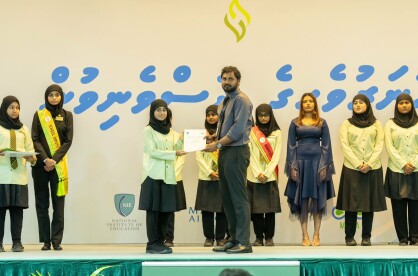The workers holding tourism afloat
The Maldives needs to take better care of the workforce that essentially pays the bills.

Gili Lankanfushi
The Maldives needs to take better care of the workforce that essentially pays the bills.

Gili Lankanfushi
The tourism sector has been expanding steadily over the past years. As at the end of March 2020, there were 955 tourist establishments in operation, including 155 resorts, 13 hotels, 629 guesthouses, and 158 safari vessels. A total of 15 new resorts came into operation in 2019 and an additional three by January 2020. According to the Maldives Population & Housing Census 2014, the tourism industry engages more than one fifth of the employed population.
Similarly, tourist arrivals have been steadily increasing since 2013 together with an increase in bed nights. The upward trend of tourist arrivals and bed nights were well catered for by the increases in bed night capacity throughout the period 2013-2019.
A mid-2019 survey by the National Bureau of Statistics targeting all tourist resorts in the Maldives showed that a total of 44,954 payroll employees work in tourist resorts. Local employees accounted for 47 percent of total employees. Out of the total payroll employees, only 10 percent were female, of which a mere 3 percent were local female employees. 2,615 reported that they commute daily to work.
The data gathered from the online job portal, covering an impacted population of more than 7,500 people, indicates that the largest number of employment complaints were among people in the tourism sector. More than half, 54 percent, of those impacted said they worked in the tourism sector

According to the Rapid Livelihood Assessment Report, key employment impacts were in the form of redundancy, no pay or reduced pay.
Reports indicate that there were several variations across the resorts on how payments were made between April and June 2020. Some forms of pay package options included:
As the Maldives recovers from the COVID-19, tourist arrivals to the Maldives are gradually and steadily picking up. From 1 January to 15 September 2021, a total of 817,387 tourists arrived in the Maldives. By 15 September, total arrivals to the Maldives exceeded 800,000 with an increase of 106 percent compared with that in 2020. The top source market for tourist arrivals was India, followed by Russia. Germany stood third. Other top source markets include USA, Ukraine, Saudi Arabia, Spain, United Kingdom, Kazakhstan and France.
As tourism picks up, there is much that can be done to support the employees who are providing the hospitality services to the tourists. Listed below are three key immediate actions which are required from the resort management side.
As the country closed its borders and went into full lock down, resorts were forced into pay cuts instead of layoffs to reduce their labor costs, hoping to preserve their workforces for a fast recovery. According to a 2020 report published by UNDP in conjunction with the Ministry of Economic Development, employees in non-managerial positions in the tourism industry received a reduced pay of approximately US$ 325 (MVR 5,000) per month on average for the period April to June 2020. On the other hand, some employees were earning as low as USD130 (MVR2,000) while some were expected to have earned USD500 (MVR7,710) or more depending on specially designed pay packages offered by the resorts during this period. Thus, retained employees have experienced an income loss more than 70 percent of their monthly income during this period, inevitably affecting their livelihood.
While pay cuts over being laid off was appreciated and understood by employees, now, as the industry is picking up and employees are rendering full service to an ever-growing body of tourists, the expectation is that the pay cuts come to an end, and the full contractual compensation pre-covid be reinstated. Furthermore, if there was an agreement to pay back the amount withheld, that promise is also due to be fulfilled. Payment of overtime as per the Employment Act and provision of fringe benefits as per the contracts must also be restored.
Afterall, prolonged pay cuts with employees executing their full responsibilities leads to negative outcomes. The Society for Human Resource Management (SHRM) reports that employment attorneys and HR practitioners said pay deductions makes sense in these uncertain times, but they cautioned against its extension, which often results in resentment, lowering productivity and eventually driving away the best employees.
The labor market has been in a nosedive since the pandemic began, and for the Maldives, this impact has been detrimental for the tourism and hospitality sector.
The resort management survey shows that about 4 perecent of payroll employees were immediately terminated, which could mean that potentially 1,800 or so local and foreign payroll employees in resorts lost their jobs in March/April of 2020 as a result of the COVID-19 crisis. The Job Center data shows higher levels of redundancy for the tourism sector – 26 percent, than for all other sectors, which is at 24 percent.
What does this data mean? Information from the 2020 Rapid Livelihood Assessment Report by the UNDP shows that employees who lost jobs and are on no pay experienced an average income loss ranging from USD600 to USD1,000 per month for the period April to June 2020, compared to 2019. Income loss accounts for loss in salaries and service charge earned. The service charge substantially increases income in the resorts and comprise of more than 40 percent of the total monthly income earned by the resort employees.
Therefore, the lives and livelihood of resort employees and their families have had a significant impact. Hence, as the industry is picking up, it is time to recruit talent for the vacant positions, allowing resorts to operate at an acceptable percentage of the total manning. This will heavily reduce the burden and strain on existing employees who are working longer hours, and mostly without additional pay. Again, prolonged work by employees in such hectic conditions lead to negative impacts on the physical and mental well-being of the employees.
About a year back, in September of 2020, the Ministry of Tourism held a virtual meeting via zoom with the management of 92 resorts. At this meeting, Minister of Tourism Dr. Abdulla Mausoom reflected on the difficulties faced by the tourism industry and urged the management of resorts to ‘consider re-hiring the employees who were laid off during the pandemic.’
In order to ensure the preservation of health and safety of employees, UNDP Maldives recommends implementing the national occupational health and safety standard for resort employees. This includes establishing hygiene regimes for staff accommodation/canteen facilities, social distancing protocols, arrangements for regular testing protocols, isolation and treatment services for staff, exploring options for minimising on-site employees by establishing family friendly residential campuses for staff in nearby islands, identifying the feasibility of virtual operations for non-tourist facing departments, ensuring employees restarting operations are well trained in their jobs, and also on health and safety guidelines required by the health authorities and tourism establishments.
“The Maldives needs tourism,” Dr Abdulla Mausoom, Minister of Tourism told Al Jazeera in August 2020. “When tourism stops, everything stops. We have no choice but to carry on.” This is very true. However, as much as the focus is placed on tourist arrivals, an equal importance must also be placed on those employees who work in the resorts. Their service is what makes the Maldives a leading destination for tourism in the world. What makes tourists return year after year.



